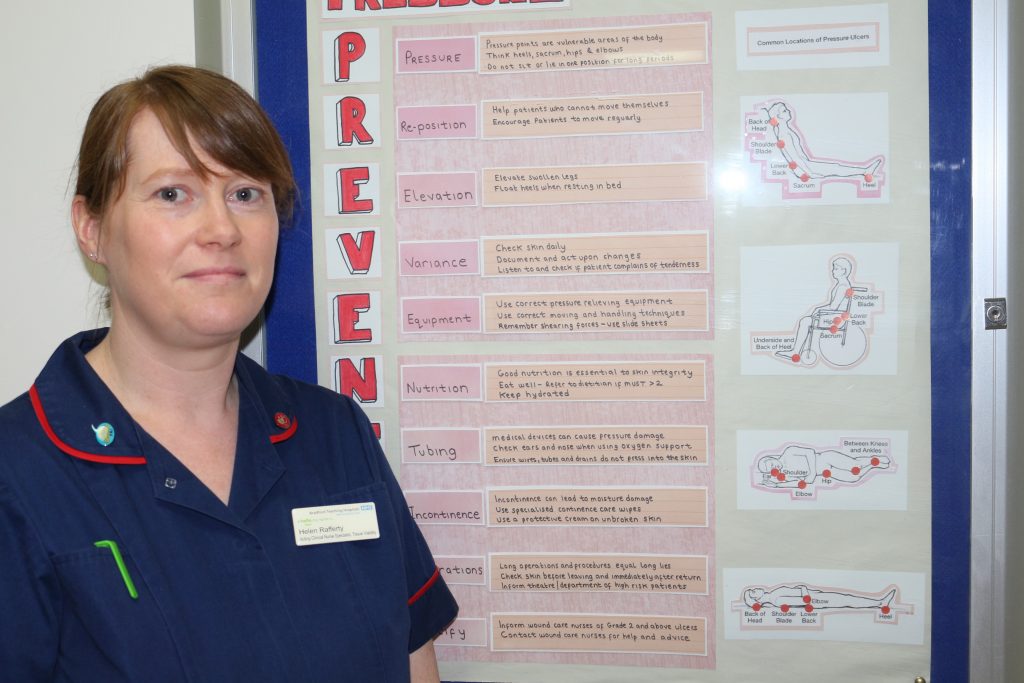Helen Rafferty joined Bradford Teaching Hospitals in 2009 and is now a clinical nurse specialist in the Tissue Viability Team.
Helen was born to be a nurse.
After gaining a BSc (Hons) degree in Nursing in 2009, she followed in the footsteps of both her mum and grandmother by entering the profession, and has not looked back since.
She is now a key part of our four-strong tissue viability team, which works across our hospitals and in the community to treat wounds and support wound care.
Helen loves the varied nature of the job, and in particular the collaborative working which Bradford Teaching Hospitals has become well known for.
“I had never done any nursing before I went to university, but I’d always wanted to become a nurse,” she said. “My mum and grandma were both nurses, and I always wanted to care for people.
“After qualifying in 2009, I got my first job as a staff nurse on the vascular ward at BRI, before moving to work in the leg ulcer clinic.”
Rewarding career
Helen admits that working in the clinic sparked a passion for wound care which continues to this day and has led her into a successful and rewarding career at Bradford Teaching Hospitals.
In October 2014, she began a three-month secondment in the wound care research team at the world-renowned Bradford Institute for Health Research, which is also part of the Trust, before securing a role as a tissue viability nurse.
And in April 2016, her knowledge and experience secured a promotion to her current position of clinical nurse specialist for tissue viability.
Helen said: “I originally wanted to be a midwife but I discovered a passion for wound care and haven’t looked back.
“The job offers a different challenge every day. It can vary from treating a simple skin tear to an open abdomen.
“If a patient has a wound that is not healing, we get called in. We provide advice and support throughout the Trust and have built up really good working relationships with many different teams.
“My role also involves working in the new patient clinic, which is really rewarding. People come to us when all other avenues have failed.”
Helen and her colleagues support the treatment of any wounds, but the most common include leg and pressure ulcers. They are also regular visitors to the trauma and surgical wards.

